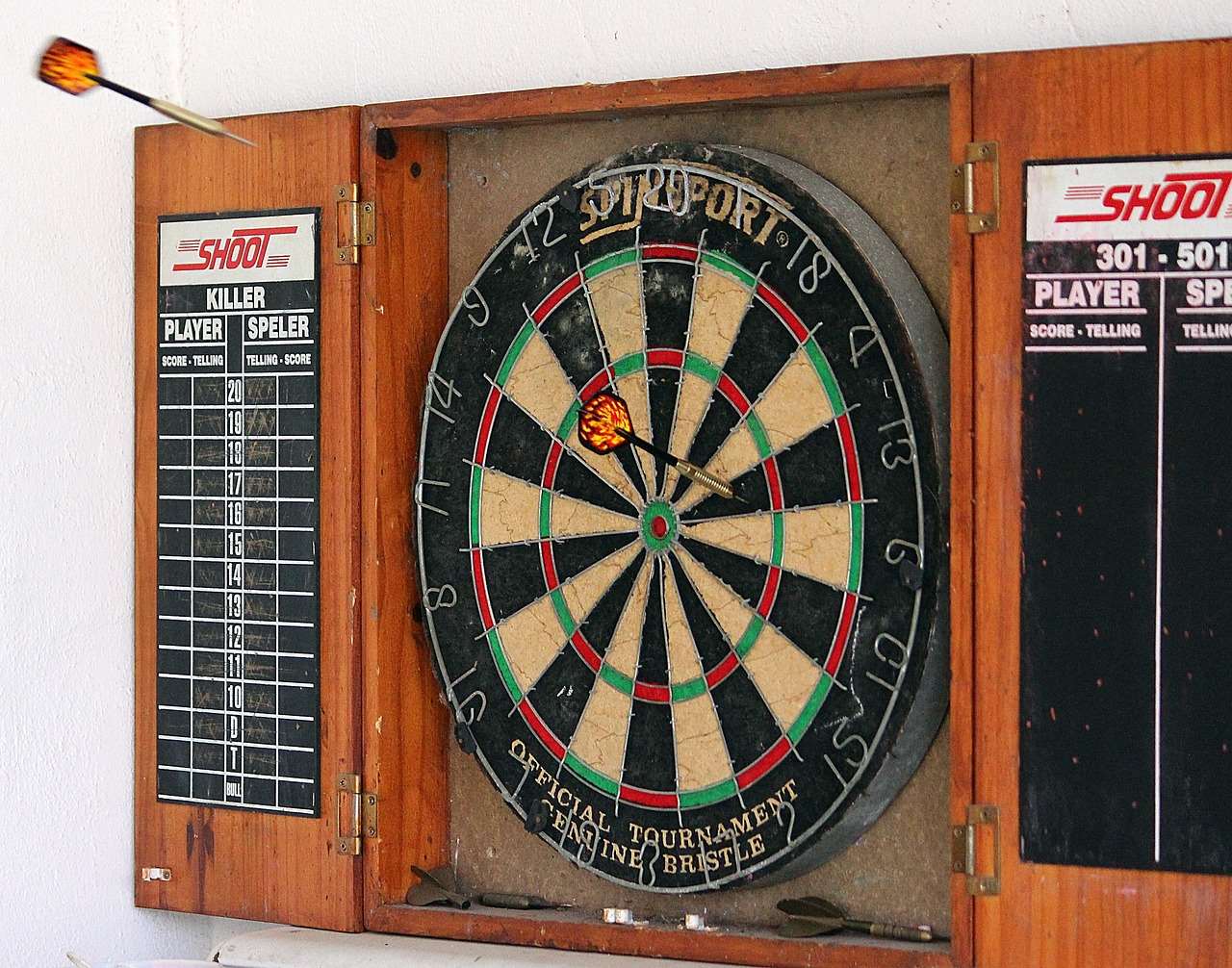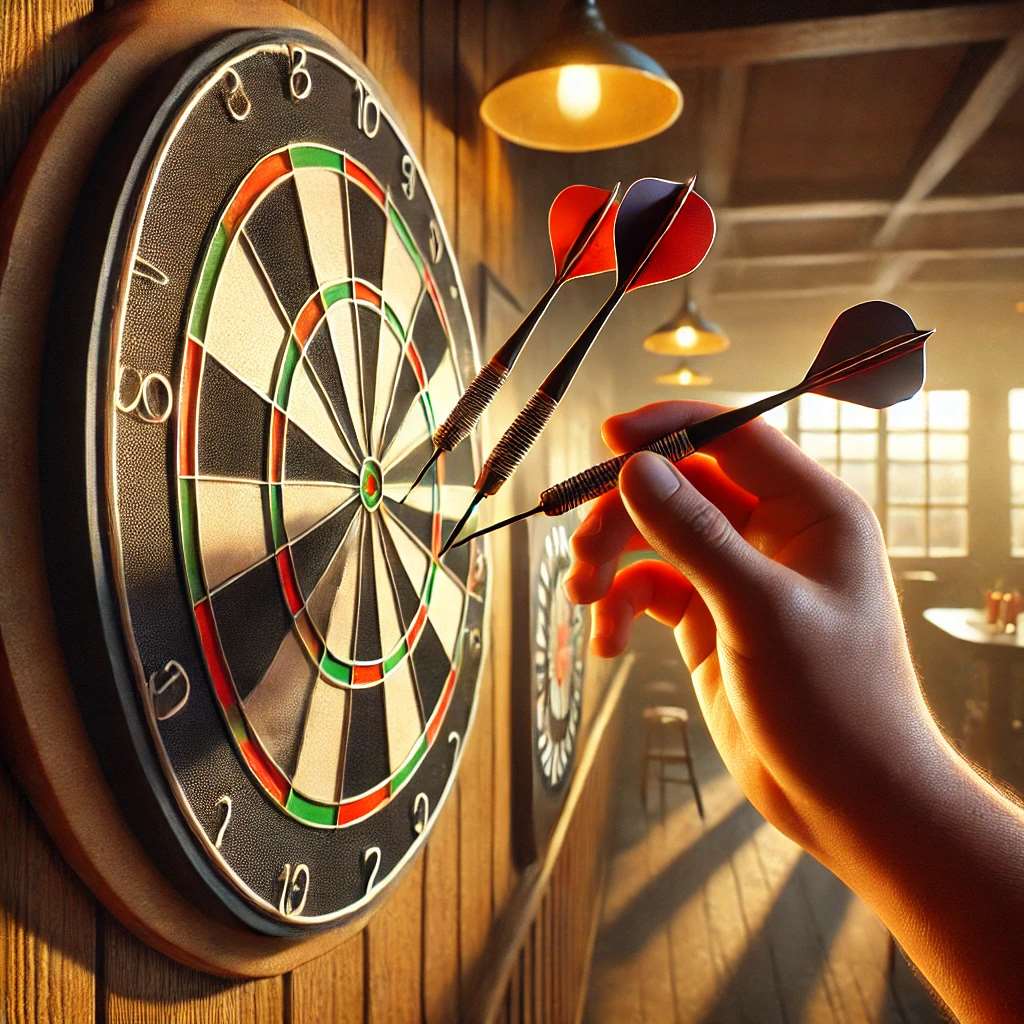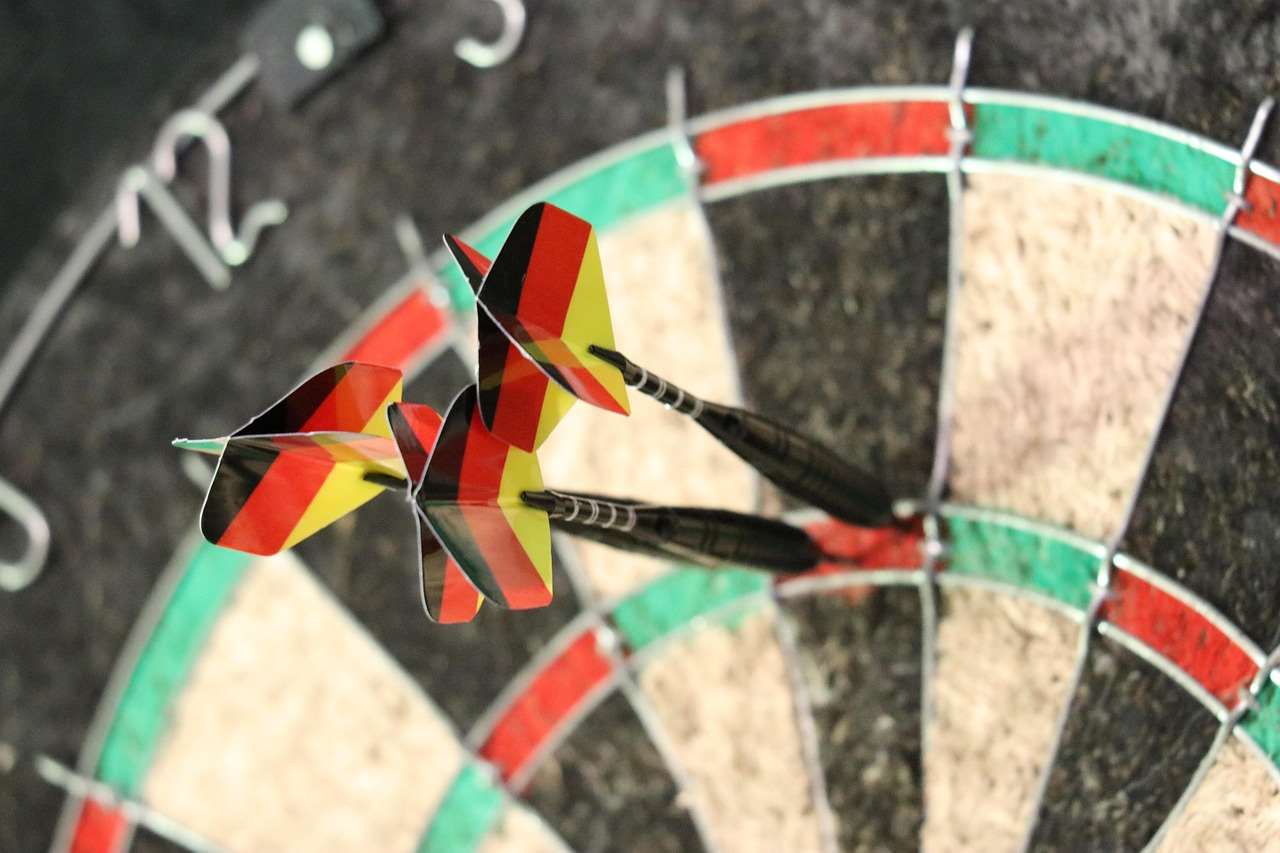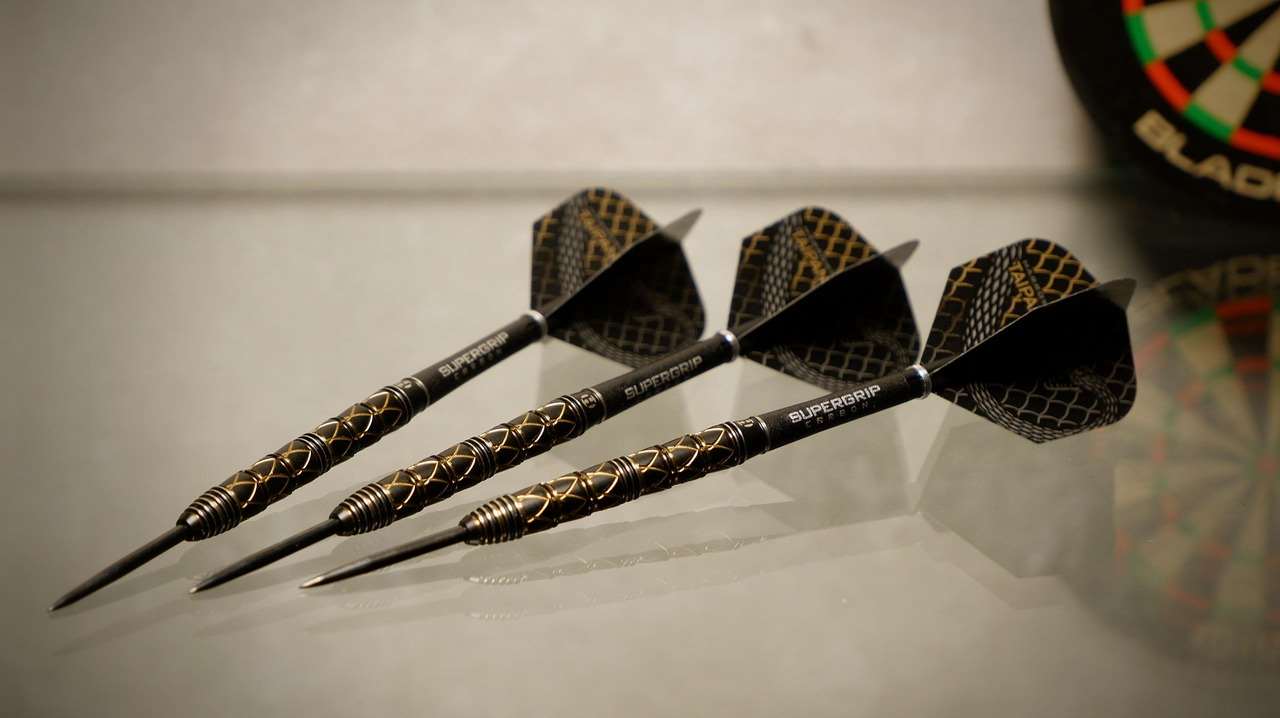Running pub darts events can significantly boost revenue and create a vibrant community hub. This guide provides a comprehensive roadmap for planning and executing successful darts nights, tournaments, and leagues in your pub. We’ll cover everything from initial setup and promotion to managing matches and keeping players engaged.
⚠️ Still Using Pen & Paper (or a Chalkboard)?! ⚠️
Step into the future! The Dart Counter App handles all the scoring, suggests checkouts, and tracks your stats automatically. It's easier than you think!
Try the Smart Dart Counter App FREE!Ready for an upgrade? Click above!
Why Running Pub Darts Events is a Winning Strategy
Beyond the clatter of darts hitting the board, running pub darts events offers a multitude of benefits. A well-organized darts night can:
- Increase foot traffic, particularly on slower weekdays.
- Boost beverage sales as players and spectators enjoy drinks throughout the event.
- Foster a sense of community among regulars and attract new customers.
- Provide a unique and entertaining experience that sets your pub apart from the competition.
- Create opportunities for friendly competition and social interaction.
In essence, darts can transform your pub into a local hotspot, driving both revenue and customer loyalty. Furthermore, a thriving darts scene can encourage more people to discover the wider culture of darts, benefitting your establishment in the long run.

Essential Equipment and Setup for Darts Events
Before running pub darts events, you need to ensure you have the right equipment and a suitable setup. This includes:
Dartboards and Surrounds
Invest in high-quality bristle dartboards that are well-maintained. Sisal fiber boards are the standard. Use surrounds to protect the surrounding walls from stray darts. Regular rotation of the dartboard prolongs its life, ensuring even wear.
Dartboard Lighting
Proper lighting is crucial for visibility. Install dedicated dartboard lighting systems that illuminate the board evenly without creating glare. Good lighting improves accuracy and reduces eye strain.
Throw Lines (Oche)
The oche, or throw line, must be at the correct distance from the dartboard (7 feet 9 1/4 inches, or 2.37 meters). Use a clearly marked and sturdy throw line to ensure fair play. Consider having multiple oches for different throwing styles.
Darts
While many players bring their own darts, having a few spare sets available is a good idea. Offer a variety of weights and styles to cater to different preferences. This is particularly useful for beginners or casual players.
Scoreboards
Provide scoreboards or electronic scoring systems for players to track their scores. Traditional chalkboards are cost-effective, while electronic systems offer convenience and automation. Consider a combination of both for different types of events.

Planning and Promoting Your Pub Darts Events
Successful running pub darts events requires careful planning and effective promotion. Consider the following:
Event Format
Choose an event format that suits your target audience. Options include:
- Casual Darts Nights: Informal evenings where players can drop in and play friendly games.
- Darts Tournaments: Structured competitions with prizes for the winners.
- Darts Leagues: Regular matches between teams or individuals over a set period.
- Themed Darts Events: Incorporate themes like Halloween or St. Patrick’s Day to add a fun twist.
Scheduling
Select a day and time that maximizes attendance. Weeknights, particularly Tuesdays or Wednesdays, are often good choices. Avoid scheduling events on nights that clash with other popular activities in the area.
Prizes and Incentives
Offer attractive prizes to incentivize participation. Prizes can range from cash prizes and trophies to gift certificates and free drinks. Consider offering smaller prizes for runner-ups and special achievements like hitting a 180.
Marketing and Promotion
Promote your darts events through various channels:
- Social Media: Create Facebook events, post updates on Twitter and Instagram, and use relevant hashtags.
- In-Pub Advertising: Display posters, flyers, and table tents to reach existing customers.
- Local Media: Contact local newspapers, radio stations, and community websites to announce your events.
- Email Marketing: Send email newsletters to your subscribers with event details and special offers.
- Word of Mouth: Encourage your staff and regular customers to spread the word.
Consider targeting different demographics by highlighting different aspects of the event in your promotions. For example, promoting the social aspect of darts could attract newcomers who are looking for a fun and relaxed environment, while emphasizing the competitive element could appeal to more seasoned players. Don’t forget to mention any darts leagues you may be planning.

Managing Darts Matches and Tournaments
Smooth match management is essential for running pub darts events that are enjoyable for everyone. Here are some tips:
Tournament Brackets
Use a tournament bracket system to organize matches and track progress. Single-elimination, double-elimination, and round-robin formats are all popular options. Online tournament generators can simplify the process.
Match Rules
Clearly define the rules of the game to avoid disputes. Common rules include: starting scores (e.g., 501 or 301), double-out requirements, and bust rules. Post the rules prominently for all players to see.
Scoring
Ensure accurate scoring by assigning scorekeepers or using electronic scoring systems. Train staff to score matches correctly and resolve any scoring disputes fairly. Clear communication is key.
Timing
Keep matches moving at a reasonable pace to avoid delays. Set time limits for each round or match if necessary. Enforce the rules consistently to maintain fairness and efficiency. It is worth considering what makes live darts so exciting and replicating some of this in your pub events.
Fair Play
Enforce the rules fairly and consistently. Address any instances of cheating or unsportsmanlike conduct promptly and professionally. Create a welcoming and inclusive environment for all players.
Ultimately, good management ensures that players know what to expect at darts events, increasing participation and positive feedback.

Keeping Players Engaged and Building a Darts Community
Running pub darts events is not just about organizing one-off events; it’s about building a thriving darts community. Here are some strategies for keeping players engaged:
Regular Events
Host darts events on a regular basis to maintain momentum and create a consistent schedule for players. Weekly darts nights or monthly tournaments are good options.
Leagues
Organize darts leagues for teams or individuals to compete against each other over a longer period. Leagues foster camaraderie and provide a sense of ongoing competition.
Handicap Systems
Implement handicap systems to level the playing field and make competitions more inclusive. Handicap systems allow players of different skill levels to compete fairly against each other.
Special Events
Host special darts events to add variety and excitement. These can include themed nights, charity tournaments, and exhibition matches featuring professional players. Consider offering hospitality packages darts events style to cater to more serious players.
Feedback and Input
Solicit feedback from players on how to improve your darts events. Ask for suggestions on event formats, prizes, and scheduling. Be responsive to their input and make adjustments accordingly.
Communication
Keep players informed about upcoming events, league standings, and special promotions. Use email, social media, and in-pub announcements to communicate effectively. Consider creating a dedicated darts group or forum.

Troubleshooting Common Issues When Running Pub Darts Events
Even with careful planning, issues can arise when running pub darts events. Here’s how to handle some common problems:
Equipment Failures
Have spare dartboards, darts, and lighting equipment on hand to address any failures promptly. Regularly inspect and maintain your equipment to prevent problems.
Scoring Disputes
Establish clear rules for scoring and have a designated scorekeeper to resolve any disputes fairly. Use electronic scoring systems to minimize errors.
Low Turnout
Analyze the reasons for low turnout and adjust your marketing and scheduling accordingly. Consider offering special promotions or incentives to attract more players.
Player Conflicts
Address player conflicts promptly and professionally. Enforce the rules of the game and maintain a fair and respectful environment.
Noise Levels
Manage noise levels to avoid disturbing other customers. Designate a specific area for darts events and use soundproofing measures if necessary.
Conclusion: Hitting the Bullseye with Your Pub Darts Events
Running pub darts events can be a highly rewarding endeavor, boosting your pub’s atmosphere, increasing revenue, and fostering a loyal customer base. By investing in the right equipment, planning engaging events, managing matches effectively, and building a strong darts community, you can create a winning combination. Remember to adapt to feedback and constantly strive to improve the experience for your players. Take these strategies and adapt them, just as you would with travel tips for darts tournaments, tailoring the advice for your unique setting and clientele. So, get ready to call “Game On!” and watch your pub transform into a thriving darts destination. Start planning your first event today!
Hi, I’m Dieter, and I created Dartcounter (Dartcounterapp.com). My motivation wasn’t being a darts expert – quite the opposite! When I first started playing, I loved the game but found keeping accurate scores and tracking stats difficult and distracting.
I figured I couldn’t be the only one struggling with this. So, I decided to build a solution: an easy-to-use application that everyone, no matter their experience level, could use to manage scoring effortlessly.
My goal for Dartcounter was simple: let the app handle the numbers – the scoring, the averages, the stats, even checkout suggestions – so players could focus purely on their throw and enjoying the game. It began as a way to solve my own beginner’s problem, and I’m thrilled it has grown into a helpful tool for the wider darts community.